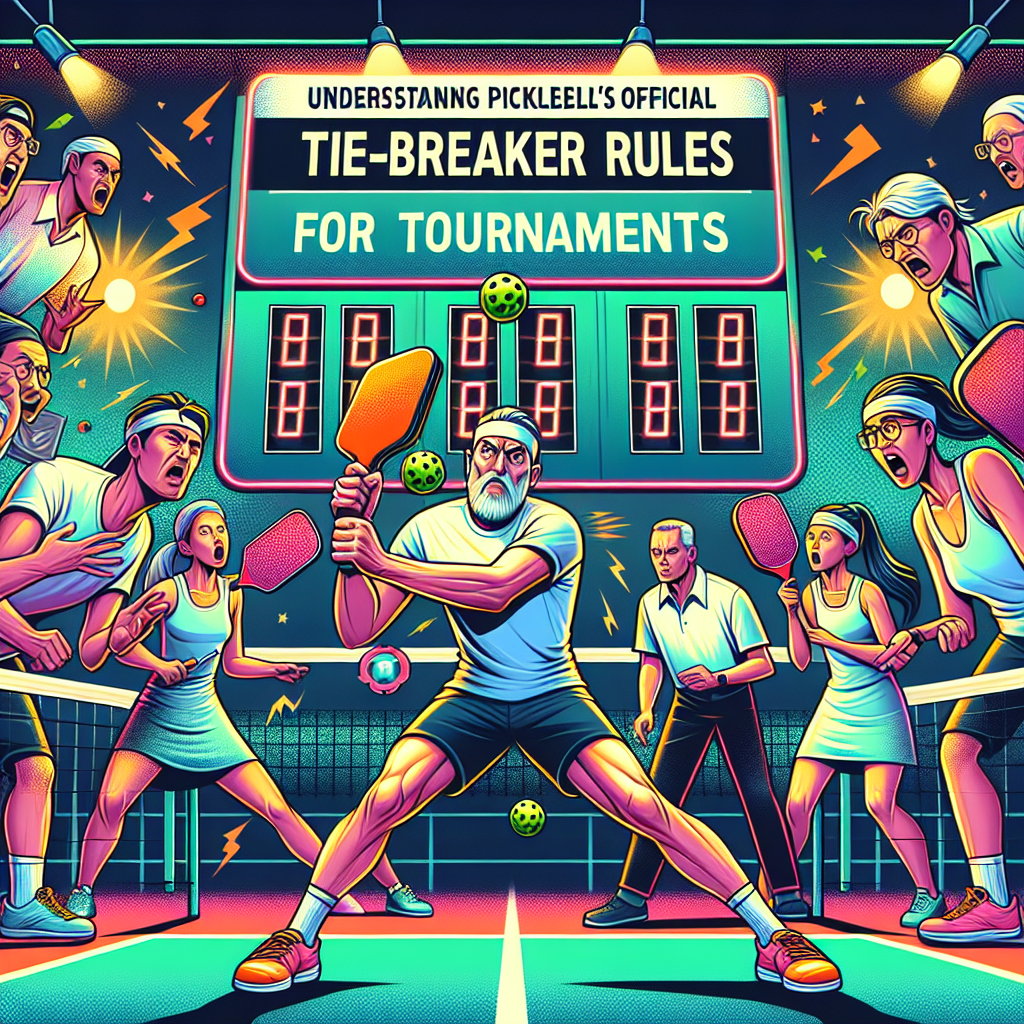
Understanding Pickleball’s Official Tie-Breaker Rules for Tournaments
authorShare
Pickleball, known for its fun, fast-paced nature, is gaining popularity worldwide. Whether you're a seasoned player or a newcomer, understanding the official tie-breaker rules for tournaments is essential for ensuring fair play and enhancing your gaming strategy. This article delves into the intricacies of these rules, helping you gain a competitive edge in the court.
Overview of Pickleball Tie-Breaker Rules
Tie-breakers in pickleball are employed to ensure that there's a definitive winner when players or teams end up with a tied score during a game. The official tie-breaker rules are designed to maintain the pace and fairness of the game. Knowing these rules is not only crucial for players but also for referees and enthusiasts who want to deepen their understanding of the sport.
Importance of Tie-Breakers in Tournaments
In tournaments, tie-breakers play an integral role by decisively concluding tightly contested matches. They are crucial for a few reasons:
- Fairness: Ensures that the better-performing player or team rightfully earns victory.
- Clarity: Provides a clear, structured method to resolve ties, reducing disputes during matches.
- Competitive Spirit: Encourages players to exhibit their best skills to break ties and win.
Basic Tie-Breaker Rules
The official tie-breaking rules in pickleball aren't overly complex, but they do contain specific nuances that are important:
- Service Change: The serve alternates between teams as per standard play, starting with the team that didn’t serve the last point before the tie-breaker.
- Scoring System: Typically played up to 11 points, win by at least 2 points.
- End Change: Players switch sides at specific points during the tie-breaker to ensure equal playing conditions.
Scoring Format in Tie-Breakers
Tie-breaker scoring adheres to a slightly different format than regular games. Here's what you should know:

- The tie-breaker often follows a rally scoring system, where a point is scored on every serve regardless of serving team.
- Winning requires reaching 11 points (or another predetermined total), with at least a 2-point lead.
- Should the game continue to tie even past the initial set points, it extends until a 2-point lead is achieved.
Strategies for Winning Tie-Breakers
Being prepared with the right strategies can significantly improve your chances of winning a tie-breaker. Consider the following tips:
- Remain Calm: Staying composed can prevent unnecessary errors.
- Focus on Serve Placement: Strong, well-placed serves can immediately put your opponent at a disadvantage.
- Adapt Quickly: Be ready to change tactics on the fly, as opponents might adjust their strategies during tie-breakers.
Conclusion
Understanding and effectively executing pickleball’s official tie-breaker rules can significantly impact the outcome of your games. Equip yourself with this knowledge to navigate tight matches successfully. And as you gear up for your next tournament, remember that preparations extend beyond the court.
If you're gearing up for the next big game, there's nothing like a perfect cup of coffee to get you energized. At Side Out Coffee, we roast our beans fresh to order and ship nationwide, ensuring every pickleball enthusiast gets their caffeine fix. Visit us at sideoutcoffee.com to try our delicious blends.




